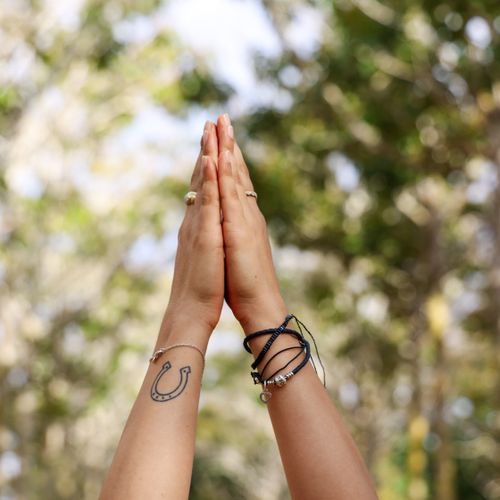What is Reiki?
Reiki is a holistic healing technique that originated in Japan. It involves the transfer of positive energy from a practitioner's hands to the recipient, promoting physical and emotional healing. The word "Reiki" is derived from two Japanese words: "rei," meaning universal, and "ki," meaning life energy.
How Does Reiki Work?
Reiki is based on the belief that an unseen life force energy flows through all living beings. When this energy is low or blocked, it can result in physical and emotional imbalances. By channeling positive energy into the recipient, Reiki practitioners aim to restore the balance of energy and stimulate the body's natural healing abilities.
The Benefits of Reiki
Reiki offers a wide range of benefits for both physical and emotional well-being. Some of the key benefits include:
- Relaxation and stress reduction
- Pain relief
- Enhanced overall well-being
- Improved sleep
- Boosted immune system
- Clarity and improved focus
- Release of emotional blockages
- Accelerated healing after injuries or surgery
Preparing for a Reiki Session
Before heading to your first Reiki session, there are a few things you can do to make the most of the experience:
1. Choose a reputable practitioner: It is important to find a qualified Reiki practitioner who has received proper training and certification. Ask for recommendations or do some research online to find a reputable practitioner in your area.
2. Dress comfortably: Wear loose, comfortable clothing for your session. This will allow you to relax and fully benefit from the treatment.
3. Hydrate and eat light: Drink plenty of water before your session to stay hydrated. It is also advisable to have a light meal or snack to maintain your energy levels during the session.
4. Set an intention: Take a moment to reflect on what you hope to achieve from your Reiki session. Setting an intention can help you focus your energy and allow for a more meaningful experience.
What to Expect During a Reiki Session
During a Reiki session, you will typically lie down on a comfortable table, fully clothed. The practitioner will gently place their hands on or near specific areas of your body, such as your head, shoulders, and abdomen. You may feel a warm or tingling sensation as the energy is being channeled.
It is important to note that Reiki is non-invasive and does not involve any manipulation or pressure on the body. The practitioner's hands are simply held in place, allowing the energy to flow naturally.
Throughout the session, you may experience a deep sense of relaxation and peace. It is not uncommon to fall asleep during a Reiki treatment, as the body's natural healing processes are activated.
After a Reiki Session
After your Reiki session, take some time to rest and allow yourself to fully absorb the energy healing. Here are some suggestions for post-session self-care:
1. Stay hydrated: Drink plenty of water to help flush out any toxins that may have been released during the treatment.
2. Reflect on your experience: Take a few moments to journal or meditate on your Reiki session. Notice any physical or emotional changes you may have experienced.
3. Practice self-care: Engage in activities that promote self-care, such as taking a bath, going for a walk in nature, or practicing yoga or mindfulness.
4. Follow any recommendations: If the Reiki practitioner suggests specific practices or exercises to support your healing process, make an effort to incorporate them into your daily routine.
Reiki for Self-Care
Reiki is not solely limited to receiving treatments from a practitioner. You can also incorporate Reiki into your daily self-care routine. Here are some ways to incorporate Reiki into your life:
1. Self-Reiki: Take a few minutes each day to practice self-Reiki. Find a quiet space, place your hands on different areas of your body, and allow the healing energy to flow. You can also visualize the energy flowing through your body, promoting healing and balance.
2. Meditation and mindfulness: Incorporate Reiki principles into your meditation or mindfulness practice. Focus on your breath and visualize yourself surrounded by positive energy.
3. Chakra balancing: Learn about the seven chakras and practice chakra balancing exercises. This can help promote overall well-being and energy balance.
4. Positive affirmations: Use positive affirmations or mantras during your Reiki practice. Repeat phrases such as "I am filled with positive energy and healing" or "I am open to receive the healing energy of Reiki."
Conclusion
Reiki offers a holistic approach to healing and self-care, focusing on balancing and harmonizing the body's energy. Whether you choose to receive Reiki treatments from a practitioner or incorporate self-Reiki into your daily routine, you can experience the numerous benefits of this ancient healing practice.
Remember, Reiki is not a substitute for medical care or treatment. It is always important to consult with a healthcare professional for any medical concerns or conditions. However, Reiki can complement other forms of treatment and support your overall well-being.













